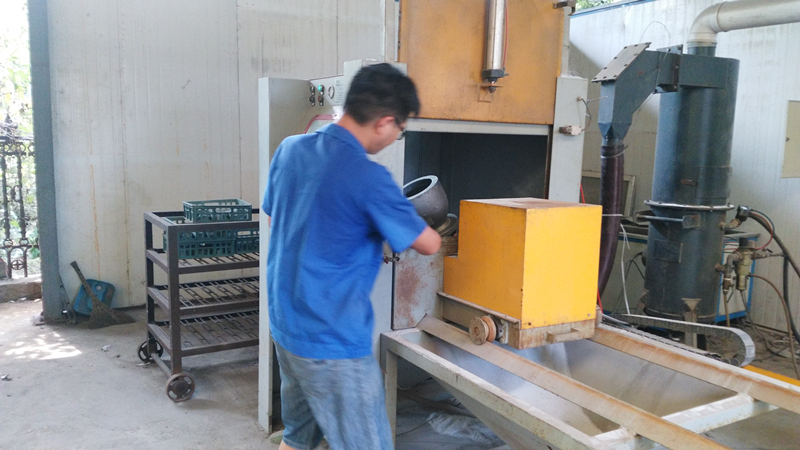Detail Explanation on Cast Iron Pretreatment
During casting, the surface of cast iron may form a silicate layer (mainly iron silicate), an oxide layer, and a cementite layer (Fe3C). It may also adhere to sand, graphite, and oil spots. The casting will also generate internal stress during cooling . If these impurities are not removed and the internal stress is not eliminated, after the enamel coating is applied and sintered, many defects (such as bubbles, pinholes, etc.) will be generated on the product. The pre-treatment methods of cast iron enamel body include heat treatment (underfiring or annealing) and sand blasting (shot blasting).

1, Heat treatment of cast iron enamel substrate
The heat treatment is to eliminate oil spots and internal stress on the surface of the casting, destroy the cementite produced under certain conditions (convert it to graphite), and decarburize the surface.
The method of heat treatment is to anneal the cast iron body in a furnace at 750 ~ 800 ° C, and the casting with slightly white mouth can increase the annealing temperature to 850 ° C. The temperature of heat treatment must be appropriate. If the temperature is too high, graphite will be converted into cementite again. If it is too low, the purpose of eliminating oil spots, internal stress, cementite and decarburization on the surface of the casting will not be achieved.
The heat treatment time of different types of castings is determined according to factors such as the type of cast iron and thickness.
The castings for making matte direct on black enamel products can be unannealed. For bright, white or colored cover coat enamel castings, annealing is generally required. However, in many enterprises that make castings and enamelware both by themselves, after years of exploration, they have been able to produce high-quality bright colored cast-iron enamel products without annealing, which increases production and saves energy.
2, Blasting or shot blasting
The sandblasting method used for thick steel plate bodies is also applicable to the surface treatment of cast iron bodies.
Sand blasting materials include silicon carbide (SiC), steel shot, quenched white iron, hard alloy, corundum, tungsten carbide, boron carbide, etc. At present, the most commonly used are emery and quenched white iron.
After the blasting of the castings, they must be inspected. If defects are found, they should be repaired and the weld repaired.
Castings for single-sided enamel and large castings are suitable for sandblasting, while small castings and castings for double-sided enamel are suitable for shot blasting. Shot blasting is much better than sandblasting.
Cast iron enamel enterprises often use steel shots for shot blasting. The diameter of the shot is 0.5 ~ 1.8mm (16 ~ 35 mesh). The larger the diameter of the steel shot is, the rougher the casting surface is after shot blasting, the enamel adherence will be better but the flatness of the porcelain enamel surface will be slightly worse; If the steel shot diameter is small, the casting surface will be very smooth after shot blasting, and the porcelain surface is shiny but poorly adhered after enameling.
During the shot blasting operation, the steel shot has a great impact on the casting. The temperature of the casting will increase during repeated shots in the shot blasting machine. The shot blasting time of a group of castings should not be too long at one time, otherwise it will easily deform.